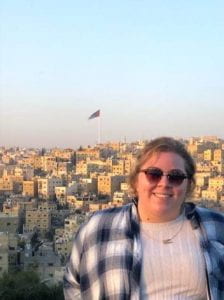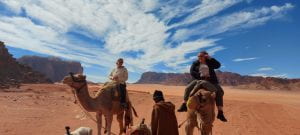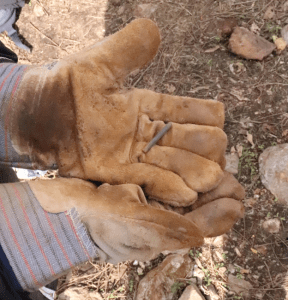
 Madeline Sizemore, a UD student majoring in Anthropology and Political Science and minoring in History and Global Studies
Madeline Sizemore, a UD student majoring in Anthropology and Political Science and minoring in History and Global Studies
Last December, after a harrowing year of politics and pandemics, I decided that I wanted a fresh start to 2021. So, a couple of days after submitting my last final, I boarded a plane to Amman, Jordan. My father works at the American Embassy here in the heart of Jordan, which means that I am one of the few lucky people able to relocate during this pandemic. Since all of my classes next semester are online, I used this opportunity to create a sort of DIY study abroad for myself since my original study abroad program in Prague had been canceled, postponed, and then canceled again. However, these things tend to work out for the best and I am now enjoying my time in a country and culture almost as old as humanity itself!

Madeline (right) traveling to Petra

Beautiful architecture carved into the cliffs of Petra
COVID-19 has made it difficult to fully embrace my new home, but I have already had the pleasure of exploring part of this beautiful country during my short time here. As an anthropology student, it is nearly impossible for me to experience travel outside of an anthropologist’s point of view which can be considered to be a blessing or a curse depending on your viewpoint.
Just a few weeks ago, I had the opportunity to visit the famous city of Petra, an archaeologist’s dream. Although my studies focus mostly on cultural anthropology, I found myself acting like a wannabe archaeologist, crawling into dark caves and climbing over large piles of boulders to try to spot all the evidence of the past left behind. I can assure you that Indiana Jones references were not spared. I also had the pleasure of having tea with a Bedouin woman in her tent (socially distanced, of course). Although the language barrier was something of a limiting factor, I was happy to learn more about the traditional culture of the region, including an intensive course in tea drinking etiquette on which I probably deserved a C+.
 In the coming months, I am looking forward to applying the knowledge that I gain from my online anthropology courses to the real world around me so that I can further enrich the time I spend here. In a time of so much disappointment and uncertainty, I am grateful for the chance to put my tuition money to good use in my attempts to use what I have learned from studying anthropology to understand and explore the rich culture and history that Jordan has to offer.
In the coming months, I am looking forward to applying the knowledge that I gain from my online anthropology courses to the real world around me so that I can further enrich the time I spend here. In a time of so much disappointment and uncertainty, I am grateful for the chance to put my tuition money to good use in my attempts to use what I have learned from studying anthropology to understand and explore the rich culture and history that Jordan has to offer.













